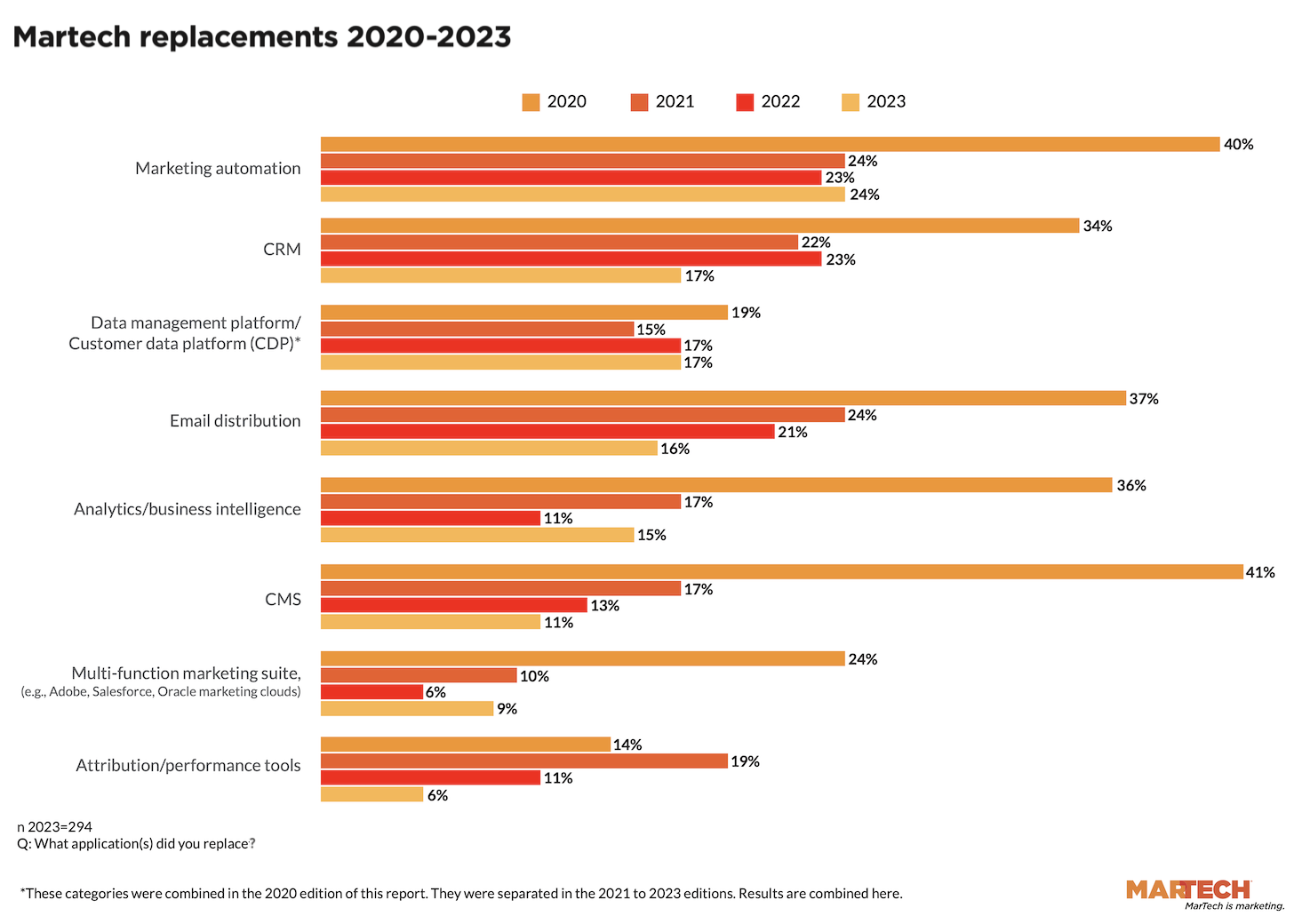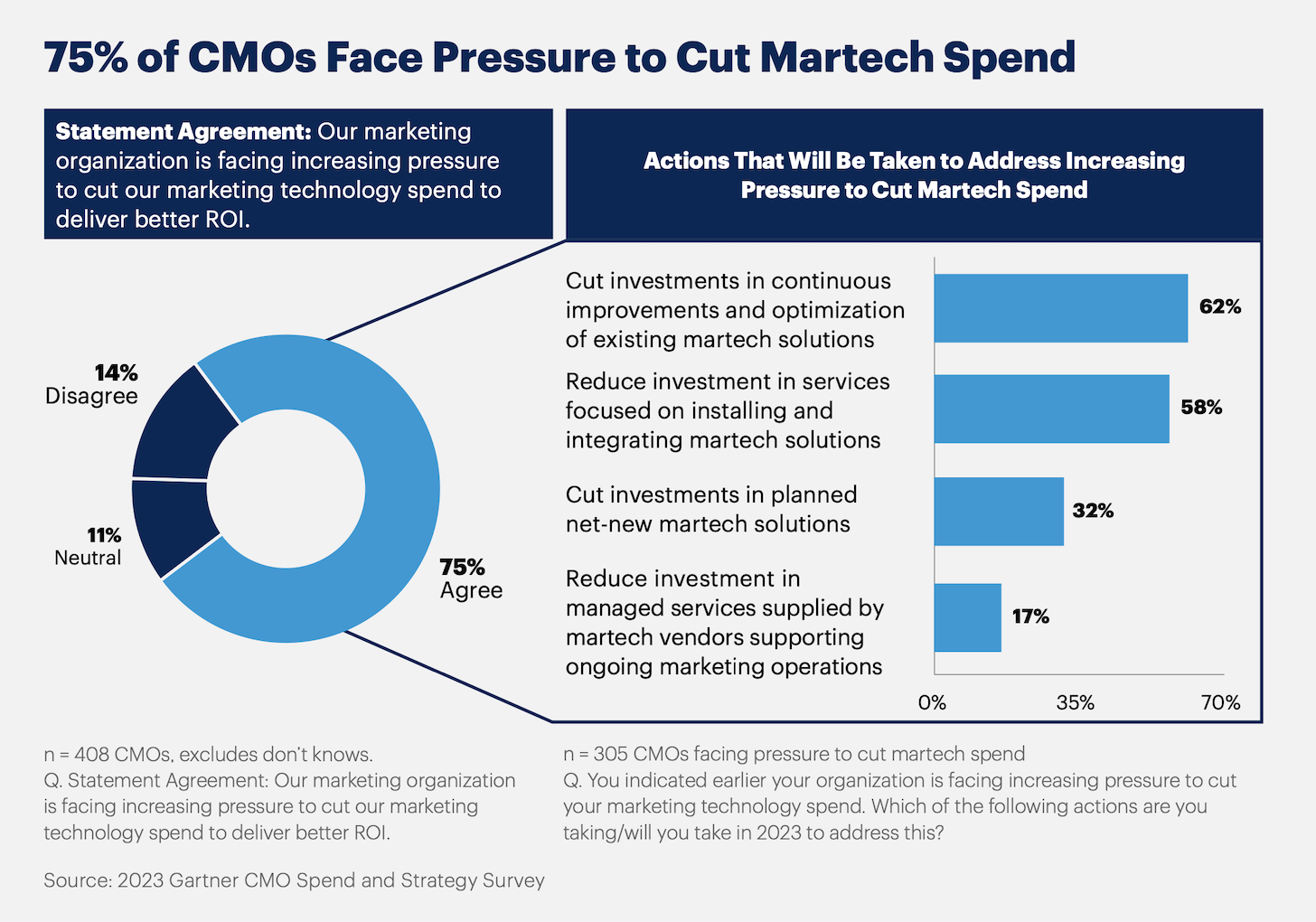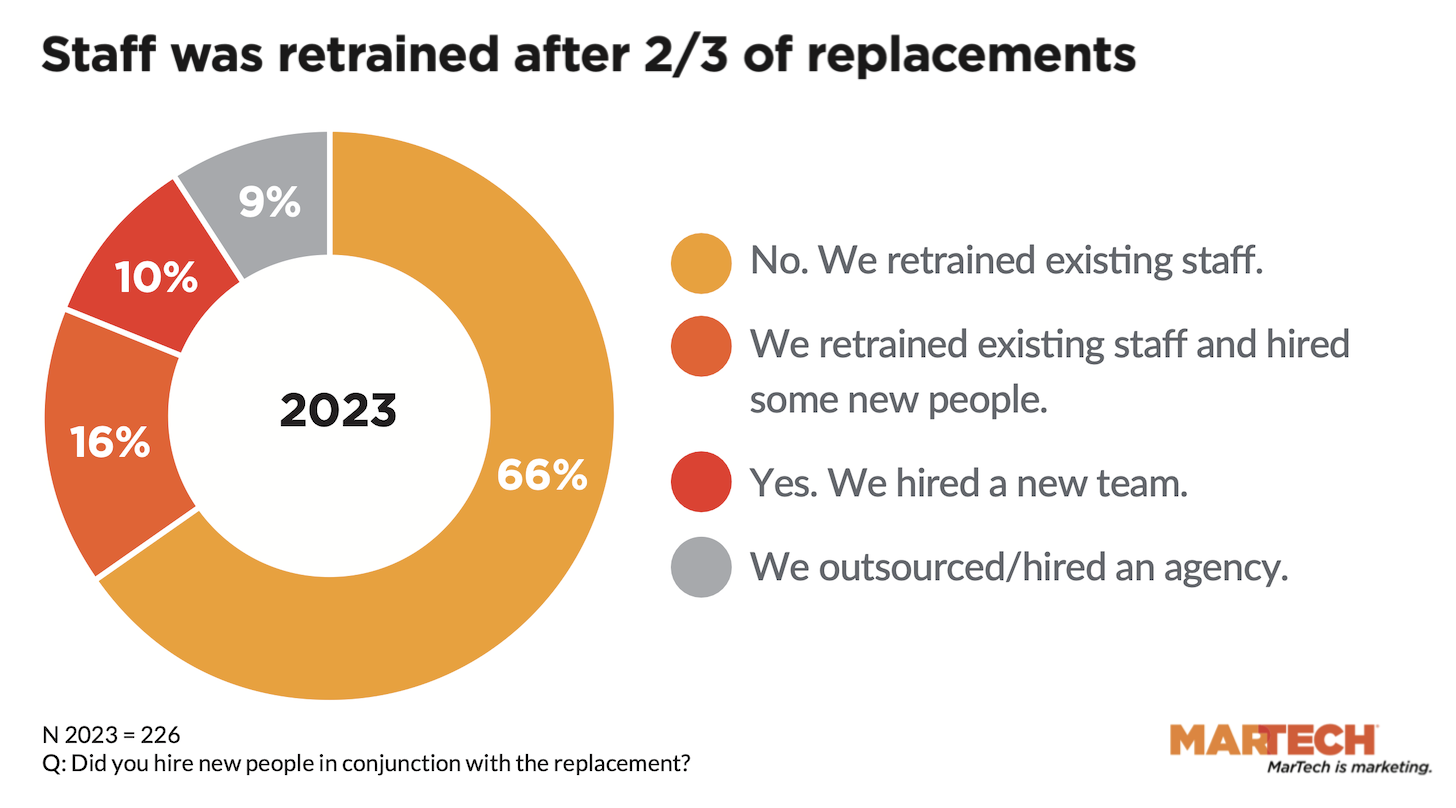
One of the most interesting annual martech surveys out there is the Martech Replacement Survey produced by the team at MarTech.org. (Kudos to Chris Elwell, whose brainchild this was.) Every year they ask marketers:
- Did you replace any martech applications in your stack?
- Why did you replace them?
- What did you look for in the apps you replaced them with?
They also ask about commercial vs. homegrown martech, what the approval process was like, and how the replacement affected staff. Did existing employees get retrained or were new staff or service providers added?
Having run the survey for the past four years, this longitudinal dataset offers unique insight into the “churn” of martech stacks and staff.
As you can see from the chart above, the good news is that replacement of major martech systems has been steadily declining year over year. 2020 was clearly a year of enormous disruption in martech — and everything else, for that matter. The mad rush to all-digital transformation in the first year of the pandemic coincided with the zeinth of massive martech investments from VCs, a perfect storm of surging supply and demand.
Since then, however, things have stabilized significantly. For instance, in 2020, CMS systems were being replaced at rate of 41%. This year, that rate dropped to just 11%. The rates at which CRMs, email platforms, analytics/BI, and other attribution and performance tools were replaced have been cut by more than half. Notably, CDPs are an exception, continuing to churn around ~17%.
Overall though, it’s less rip-and-replace, more extend-and-embrace.
To answer the question of why replacement rates have plummeted, it’s easiest to ask what motivates a martech replacement in the first place?

The top reason that marketers look to swap out one martech app for another — at least commercially packaged apps — has consistently been to get better features (42% this year). The second most common motivation for the past two years has been better/easier integration (25%), which is near and dear to my heart. If you’re a martech vendor who isn’t prioritizing good integrations as a first-class feature, you’re ignoring the big, booming voice in the sky at your peril.
Somewhat surprisingly, reducing expenses comes in third place, at only 22%.
Once marketing has decided to kick an existing app to the curb, the list of factors that they look for in its replacement shows that cost matters — it’s the second most common criteria on which they evaluate alternatives.

But here too, integration capabilities and an open API stand out as a factor 36% of the time. Right behind that are data centralization and data capabilities (35%), which strike me as integration under another name. (The data layer is one of four dimensions of integration, but the foundation upon which everything else is built.)
So why are martech apps being replaced less frequently these days? The logical answer:
- Marketers are increasingly happy with the features of their martech apps
- These apps are increasingly integrated into their overall martech stack
- The cost of these martech apps align with the market prices for their categories
Otherwise, they’d be motivated to switch.
Personally, I’m delighted that better integrations seem to be permeating throughout the industry. This aligns with the patterns I see in my work at HubSpot, where more customers are integrating more apps and the inventory of off-the-shelf integrations available to chose from continues to grow rapidly. Martech still has further to go with better breadth and depth of integrations, but the progress is encouraging. And it’s showing up in results such as this report.
One related data point from Gartner’s latest CMO Spend and Strategy Survey reports that the majority of CMOs are under pressure to cut martech spend. The most common actions CMOs plan to take are to reduce investments in further improving and optimizing their existing martech solutions (62%) and to reduce investments in services focused on installing and integrating martech solutions (58%).

Surprisingly, pulling back on planned net-new martech solutions is only intended by 32% of those expecting to make cuts. The release valves for budget pressure seem to be mostly about getting more out of the current applications in the stack without as many third-party services supporting them.
Which brings me to one last encouraging finding from the MarTech.org survey. When companies are replacing martech products, they’re mostly (66%) keeping their existing staff. In another 16% of cases, they’re also adding new talent — while still retraining their existing team. Only in 10% of the cases are they ripping-and-replacing the team or, 9% of the time, hiring an outside services provider.

It’s great to see that martech and marketing operations teams running these systems are increasingly vendor agnostic in their skillset and roles and able to adapt to new tools. They’re operating at a strategic level above the tools, pushing against Inverse Conway’s Law. And the fact that companies are pulling back from outside services is also a growing recognition that martech management needs to be a core internal capability of the modern marketing department.
Greater stabilization of the martech stack — especially a more integrated martech stack — and of martech teams is an excellent sign of increasing maturity in martech and marketing ops. Let’s take a moment to celebrate that.


